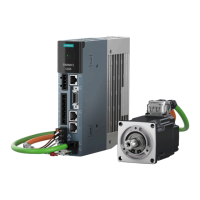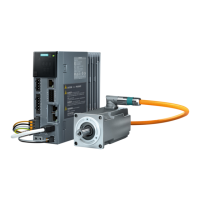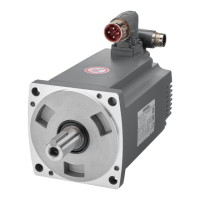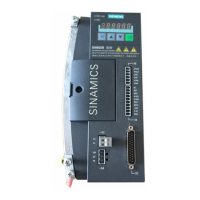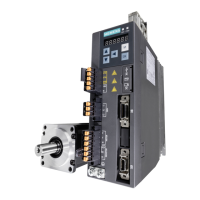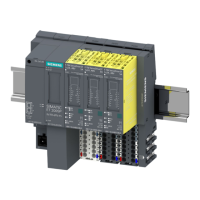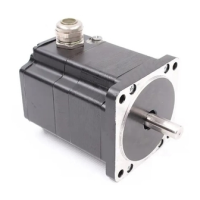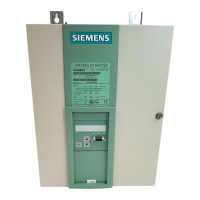Frame size Resistance
(Ω)
Maximum continuous
power(P
cont_int
)
(W)
Maximum peak
power(P
max_int
)
(W)
Maximum br
aking
energy(E
max_int
)
(J)
FSB (0.4 kW) 100 16 742 123
FSC (0.75 kW, 1 kW) 50 30 1884 292
3 AC, 380 V ... 480 V
FSA (0.2 kW, 0.4 kW) 500 14 754 210
FSB (0.75 kW ... 1.0 kW) 160 15 2312 637
FSC (1.75 kW ... 2.5 kW) 70 30 5086 1137
FSD (3.5 kW ... 7.0 kW) 27 65 9896 1948
More information
For more information about connecting the br
aking resistor, see Section "Connecting the
braking resistor (Page142)".
13.1.7.2 External braking resistor
Description
If the motor feeds back more energy than can be dissipated by the internal braking resistor, or
when you use a converter without the internal braking resistor, you will require an external
braking resistor. You can select a suitable external braking resistor according to your calculation
result for the specic application.
When selecting a braking resistor, you must take into account the factors such as load inertia,
deceleration time, speed variation, and braking period according to your specic application
and technology.
For more information about selecting a motor, see Section "Motor selection (Page755)".
WARNING
Risk of r
e caused by continuous over
load
An explosion or a re could occur if the external braking resistor is continuously overloaded (for
example as the result of a defective Braking Module). This can result in severe injury or death
and/or the enclosure could melt.
• Use only braking resistors that are intrinsically safe.
NOTICE
Damage to the converter due to its maximum load being exceeded
If the maximum permis
sible continuous power, peak power or braking energy is exceeded, the
converter may be damaged.
• Only ever operate the converter within its maximum permissible working range.
Technical data
13.1Technical data of the converter
SINAMICS S200 pulse train servo drive system with SIMOTICS S-1FL2
Operating Instructions, 11/2023, FW V6.3, A5E51646767B AA 513

